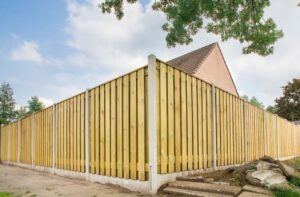Geology of Quincy, Massachusetts
Quincy is a historic city located on the South Shore of Massachusetts, about 10 miles south of downtown Boston. With a population of over 90,000, Quincy is the eighth largest city in Massachusetts. The city spans an area of 26.9 square miles, which includes extensive coastline along Quincy Bay and the Neponset River.
Quincy’s landscape and geology have been shaped over long periods of time by natural processes like glaciation, erosion, and deposition. The geology has also been influenced by quarrying activities that took advantage of the area’s abundant granite bedrock. Let’s take a closer look at some of the key geological features and formations that define Quincy.
Bedrock Geology
The bedrock geology of Quincy is dominated by igneous intrusive rocks, primarily granite. During the Proterozoic Eon, between 1.7 billion and 541 million years ago, magma intruded into older metamorphic rocks deep underground. As the magma cooled slowly over millions of years, it crystallized to form granite bedrock.
The granite found in Quincy is classified as alkali feldspar granite. It is light gray, coarse-grained, and contains quartz, feldspar, biotite mica, and hornblende. The granite is very hard and resistant to weathering and erosion. It forms the backbone of many of Quincy’s topographic features like hills, ridges, and the islands in Boston Harbor.
Glacial Geology
The bedrock geology of Quincy was profoundly impacted and modified during the Pleistocene Ice Age spanning 2.6 million to 11,700 years ago. As continental glaciers expanded out of Canada, they advanced over New England multiple times. These massive ice sheets scraped, eroded, and sculpted the granite bedrock surface. Glacial scouring and plucking steepened and smoothed bedrock surfaces, creating a local topography of hills, valleys, and lowlands.
As the glaciers retreated, they left behind a variety of glacial sediments and landforms. These include:
- Drumlins: Oval-shaped hills composed of compact glacial till. The hills rise between 30 to 100 feet above the surrounding lowlands. Prominent drumlins in Quincy include Forbes Hill.
- Eskers: Long, sinuous ridges of stratified sand and gravel deposited by glacial meltwater rivers. An esker cuts through western Quincy in the Squaw Rock area.
- Kettle lakes and ponds: Formed by isolated blocks of ice breaking off the glacier and becoming buried in glacial sediments. As they melted, kettles were created. Quincy has several kettle ponds like Town Brook flood control basin.
- Outwash plains: Broad plains of stratified sand and gravel deposited by glacial meltwaters in front of the retreating ice margins. Much of eastern Quincy is covered by flat outwash deposits.
- Till plains: Extensive areas blanketed by unsorted, unstratified mixtures of clay, silt, sand, gravel, and boulders directly deposited beneath the glaciers. Quincy’s drumlins and other hillier terrain is often veneered with stony till.
Post-glacial Geology
Since the retreat of the last glacier around 15,000 years ago, Quincy’s landscape continues to be shaped by ongoing geological processes. These include:
- Wave erosion: Marine erosion along the shores of Quincy Bay and in Boston Harbor has created wave-cut terraces, sea cliffs, and rocky shoreline features. Wollaston Beach is a good example.
- Stream erosion: Rivers and streams continue to erode and incise glacial sediments and bedrock. The Neponset River has carved a broad valley with terraces and floodplains.
- Deposition: Modern streams, wetlands, and coastal areas are still sites of sediment deposition, creating deltas, marshes, and new floodplain surfaces.
- Karst processes: Sinkholes and caves can form gradually in the granite bedrock as acidic groundwater dissolves and erodes cracks and fissures.
- Artificial fill: Humans have extensively altered Quincy’s landscape by placing artificial fill for development along the coasts and in wetland areas.
Economic Geology
The granite bedrock has long been one of Quincy’s most economically important geological assets. Granite quarrying took place from the early 1800s into the 1900s. Over a billion gallons of granite were extracted from Quincy’s hills and used widely in buildings, bridges, and infrastructure across the region.
Some of the most active quarries existed at Quincy Hill (Rock Hill), Pine Hill, Town Hill, and Rattlesnake Hill. Although not mined commercially today, the granite still offers value for dimension stone, landscaping, and crushed stone applications.
Geological Formations in Quincy
Here is an overview of some of the major geological formations and rock units found across Quincy from oldest to youngest:
- Quincy Granite (Proterozoic) – Pink to gray coarse-grained granitic bedrock; alkali feldspar granite. Forms the basement rock of the area.
- Neponset Formation (Carboniferous) – Sedimentary layers of conglomerate sandstone, shale and coal deposited about 300 million years ago. Only found in a small area along the Neponset River.
- Boston Basin Sediments (Carboniferous to Triassic) – Arkose sandstone, siltstone and shale filling the Boston Basin prior to the Pleistocene glaciations. Underlies younger glacial sediments.
- Glacial Till (Pleistocene) – Unstratified, unsorted glacial till deposited directly by glacial ice activity. Veneers the bedrock surface in many areas.
- Glacial Outwash (Pleistocene) – Well sorted, stratified sand and gravel deposited by glacial meltwater streams. Underlies eastern Quincy.
- Post-glacial Deposits (Holocene) – Recent wetland peat, alluvium, coastal and estuarine sediments. Up to 30 feet thick.
Key Geological Sites in Quincy
Some of the best places to observe Quincy’s geological history and formations include:
- Squantum Rock Park – Exposed Quincy granite bedrock historically quarried. Glacial erratics boulders present.
- Town River – River erosion into glacial sediments and bedrock. Outcrops of Neponset Formation sandstone.
- Wollaston Beach – Coastal landforms including wave-cut bedrock terraces, sea cliffs, and rocky shoreline.
- Quincy Quarries Reservation – Old granite quarry sites reclaimed as parklands with steep quarry walls.
- Blue Hills – Igneous bedrock mountains south of Quincy shaped by glaciation. Great views of the surrounding landscape.
Glacial Erratics in Quincy
As the glaciers advanced south across New England, they ripped up and transported bedrock and boulders from as far north as Canada. These large boulders, called glacial erratics, were deposited in Quincy by the melting ice sheets.
Some of the notable boulders include:
- Rocky Nook Monolith – Estimated 40 ton reddish granite boulder located along the Town River. Likely derived from New Hampshire bedrock.
- West Quincy Conglomerate Boulder – Large meta-conglomerate boulder made of sedimentary rock unlike local geology. Indicates long transport distance.
- Rattlesnake Ledge – 10 foot long glacial erratic on a drumlin named for its resemblance to a snake. Popular spot for rock climbing.
- Pulpit Rock – Glacial erratic balanced precariously atop a small pedestal on a hillside in Quincy. Shape resembles a preacher’s pulpit.
- Indian Head Rock – 30 ton granite boulder with naturally eroded shape of a Native American face located along Furnace Brook.
In summary, Quincy’s landscape reflects an interesting geological history going back over a billion years. The resistant granite bedrock and overlying glacial deposits have created the hills, valleys, drumlins, and coastal features that characterize the region today. Ongoing natural processes as well as quarrying and urban development continue to alter Quincy’s terrain. This geology contributes to Quincy’s natural beauty, economic resources, and suitability for settlement and growth over the centuries.
Hours
Monday: 9:00 AM – 5:00 PM
Tuesday: 9:00 AM – 5:00 PM
Wednesday: 9:00 AM – 5:00 PM
Thursday: 9:00 AM – 5:00 PM
Friday: 9:00 AM – 5:00 PM
Saturday: 9:00 AM – 5:00 PM
Sunday: 9:00 AM – 5:00 PM
Contact Us.
Get Solutions For All Fencing Services
Every day from
9:00 — 5:00
Call to ask any question




